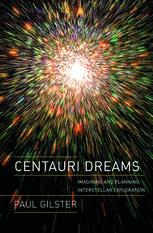

Most ebook files are in PDF format, so you can easily read them using various software such as Foxit Reader or directly on the Google Chrome browser.
Some ebook files are released by publishers in other formats such as .awz, .mobi, .epub, .fb2, etc. You may need to install specific software to read these formats on mobile/PC, such as Calibre.
Please read the tutorial at this link: https://ebookbell.com/faq
We offer FREE conversion to the popular formats you request; however, this may take some time. Therefore, right after payment, please email us, and we will try to provide the service as quickly as possible.
For some exceptional file formats or broken links (if any), please refrain from opening any disputes. Instead, email us first, and we will try to assist within a maximum of 6 hours.
EbookBell Team

5.0
18 reviewsI wrote this book because I wanted to learn more about interstel lar flight. Not the Star Trek notion of tearing around the Galaxy in a huge spaceship-that was obviously beyond existing tech nology-but a more realistic mission. In 1989 I had videotaped Voyager 2's encounter with Neptune and watched the drama of robotic exploration over and over again. I started to wonder whether we could do something similar with Alpha Centauri, the nearest star to the Sun. Everyone seemed to agree that manned flight to the stars was out of the question, if not permanently then for the indefinitely foreseeable future. But surely we could do something with robotics. And if we could figure out a theoretical way to do it, how far were we from the actual technology that would make it happen? In other words, what was the state of our interstellar technology today, those concepts and systems that might translate into a Voyager to the stars? Finding answers meant talking to people inside and outside of NASA. I was surprised to learn that there is a large literature of interstellar flight. Nobody knows for sure how to propel a space craft fast enough to make the interstellar crossing within a time scale that would fit the conventional idea of a mission, but there are candidate systems that are under active investigation. Some of this effort begins with small systems that we'll use near the Earth and later hope to extend to deep space missions.